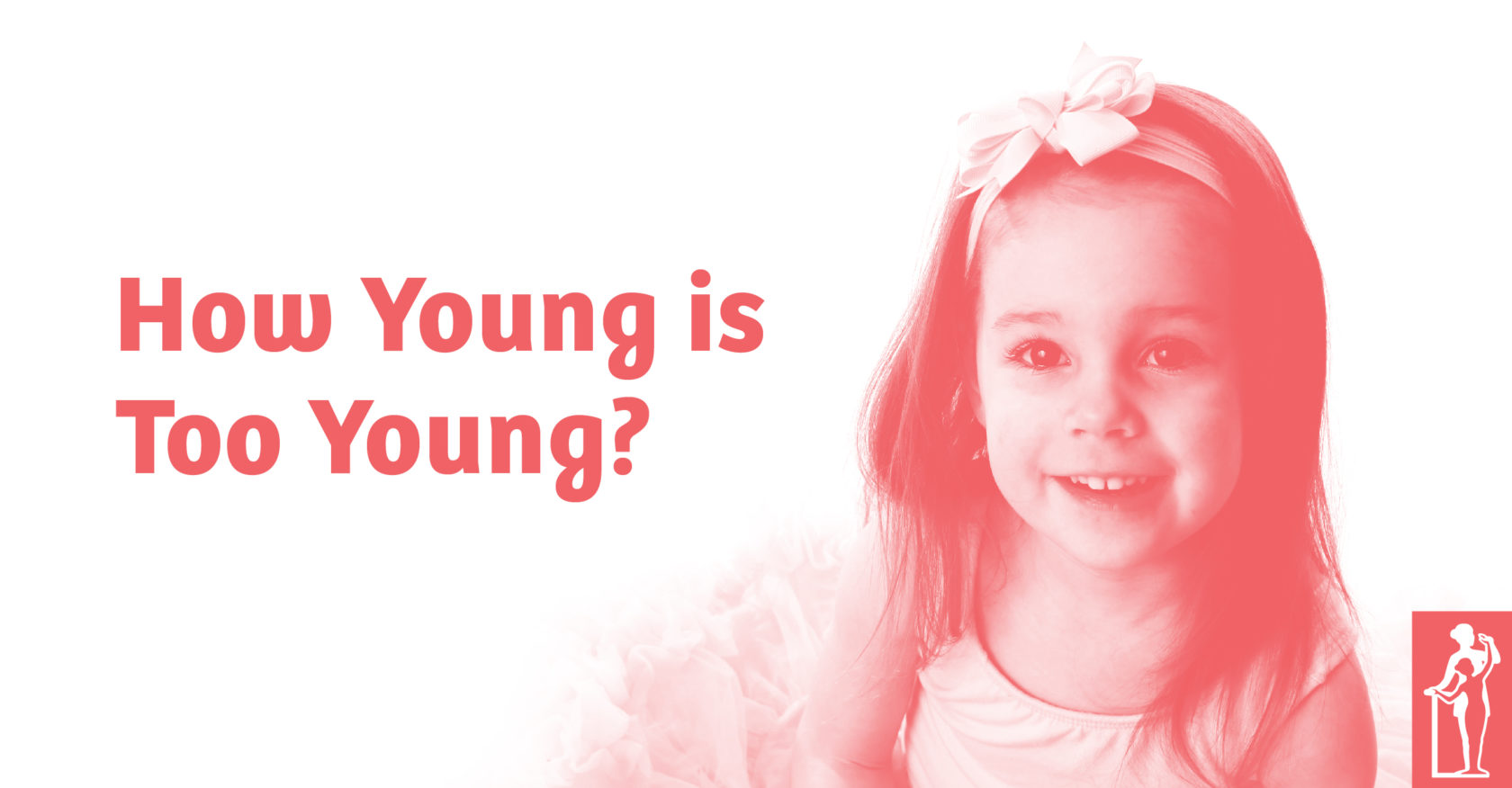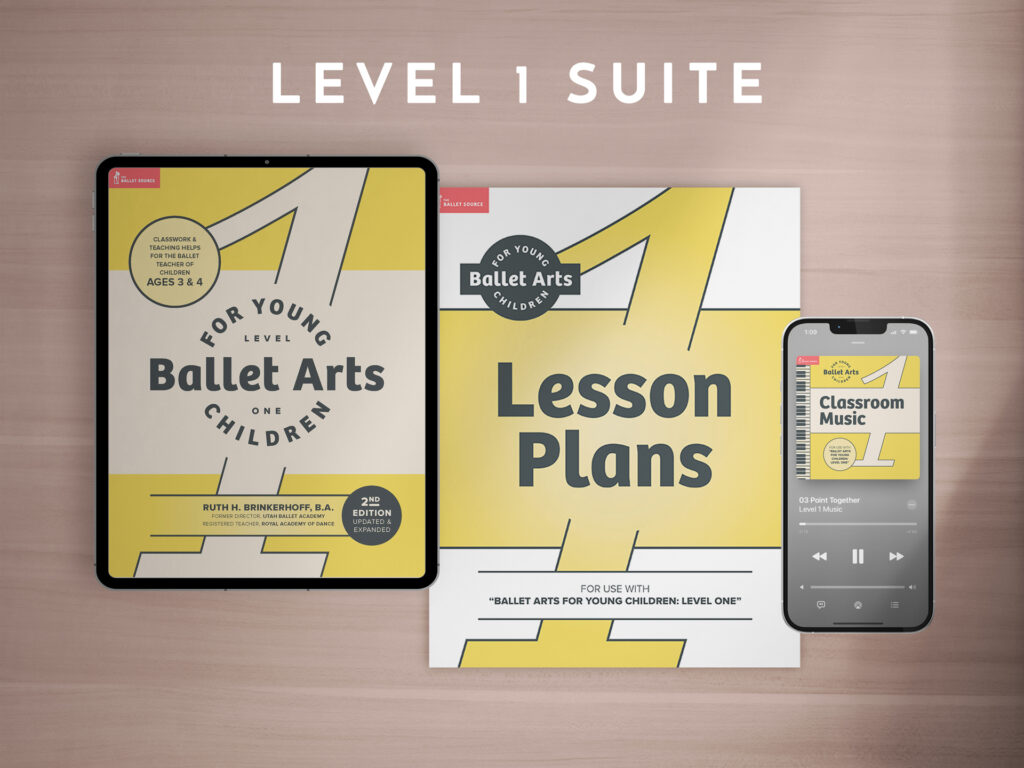That 3-year old shouldn’t be spinning pirouettes any time soon. So what should you teach her? What can you do for the dancer-to-be to prepare her for the technical demands of the years to come?
Choosing the right age to start young students in ballet poses a challenge to studio owners, and even experienced ballet teachers. So how do you make the decision? How will you build the proper foundation?
As you come to know and understand the developing mind and body of the 18 month-old to 3 year-old child, you will open doors to some incredible learning opportunities.
Let’s explore a breakdown of the physical and mental development of young dancers and unpack the specifics about what to teach, and when:
Your Students at Eighteen Months Old
Physical Characteristics: Walks, climbs, crawls, runs. Enjoys pushing and pulling. Takes things apart, but not too good at putting together. Tires easily. Not well coordinated, not potty trained.
Your eighteen month-old students will be able to last through a very short 30-45 minute class with 30 minutes as the recommendation. Walking across the room, walking in a circle, crawling on the floor (strengthens abdominal muscles), running, and use of creative props all develop the natural movement skills they will need to continue to progress.
Mental Ability: These little ones use meaningless sounds, and some beginning language. They use “mine” and “no” generously. They like their stories short, and they need pictures to maintain attention. They’re naturally curious. They think only in concrete terms of what can be seen now, or touched, or felt, or heard. They have not yet developed a sense of time sequence or passage of time. (Oh, to be a kid again…)
Story time is a great way to introduce movement in a way that expresses feeling for these bright-eyed explorers. Use a very simple, short 2-5 minute story and then help them find ways to express simple emotions (happy, sad, tired, angry, scared, excited, etc.) with their bodies, specifically their hands and feet.
Social/Emotional Skills: They play alone and may watch others, or play in parallel. They’re self-centered and cannot yet share. As you probably know, they cry easily, and their moods change quickly.
With the reality of the moodiness in mind, we know that group activities will not work. Even getting your littlest ones to hold hands will most likely be a waste of class time. The emotional atmosphere of the room is set by the teacher, so you would be well advised to keep the energy high and their little minds as involved as possible.
Your Two Year-Olds
Physical Characteristics: These firecrackers stay on the move. Just like me, they’re irritable and restless when they’re tired. They jump, walk, and run. They’re able to clap their hands and kick a ball. Their large muscles are developing rapidly. They can handle large crayons, but not buttons or zippers.
Twos will often find accomplishment and delight from discovering all of the things their bodies can do. Focus on movements that involve the larger muscle groups (big jumps from two feet, reaching arms up high then reaching to touch the floor, jumping fast on two feet, etc.) since these are the ones they will able to perform well. Be sure to incorporate equal amounts of active time with rest time so they can maximize their activity in class.
Mental Ability: For these kids, thinking is simple, direct, and in the present tense only. They don’t comprehend abstract ideas. They have an attention span of about two minutes. They’re curious and love to explore. They enjoy patterns and repetition. They are able to put two or three words together into short sentences or phrases. They like simple puzzles, texture books, and toys that stack or go together easily. They can use simple art materials. They learn simple songs and like short stories.
They will do well with a very basic class structure. Try to keep things somewhat the same week after week. Small changes in your lesson plans throughout the year will allow them to learn new things, but slowly and only as they seem to be able to handle. Creativity is going to be key with them. They will not do well with too many abstract movement ideas, but they do love to pretend to be things that they know, such as butterflies, birds, dogs or characters.
Social Skills: They’ll still need to play mostly alone. They do like playing near others, but they’re not able to share. You’ll find them arguing over toys when with others. They will appeal to adults to get what they want from other children.
Again, this age is not quite ready to work well in groups yet. Most of them are beginning to learn how to relate to others their age, but do not possess the maturity needed to work as a group or to do many tasks as a unit. They do, however, understand friendship, and they will highly value every little companion that comes into the classroom with them each week. You may begin to see some of your students developing closer friendships by sitting together, holding hands, or always dancing next to one another. This is fine, but be sure that you find ways to help them branch out to the others if they seem exclusive.
Emotional Maturity: Twos have no regard for time. They’re entirely dependent on adults. They’re loving and affectionate, and they like mother to be near. They enjoy holding hands, sitting on laps, etc. They show anger and frustration (tantrums) to let you know how they feel. Moods swing quickly. They want independence, but they cannot be left alone.
Twos wear their hearts on their sleeves. Nothing is hidden, but everything that they feel is right out in the open for all to see. When they are being corrected, they don’t know not to make angry faces, stomp their feet, or yell. It will take gentle training to teach them how to handle their emotions. Your friendship and loyalty are extremely important, and you must be someone with whom they feel safe.
Three Years Old: Ready For Dance Class
Physical Characteristics: Threes can walk and run, but their coordination is not well developed. They need quite a bit of practice on these basic skills. Large muscle development is important at this age. They should be able to begin learning hops on one foot with assistance, forward gallops (non-technical), jumps in place on two feet, and marching. Some may be able to skip, especially as they near their fourth birthday. They tire quickly when running, galloping, etc. They like using their hands, but they don’t have much small muscle development yet.
Independence is beginning to emerge from this age group. They can do so many things now that they couldn’t one year ago, and they are becoming much braver in trying new things. Their gross motor skills are developing rapidly, and some are even starting to enjoy fine motor skills like coloring, finger paints and songs with hand motions.
Note: Skipping is an advanced coordination that should not be forced on threes. It can be shown, and the child helped if they are close to learning it.
Mental Abilities: Threes have a very short attention span and cannot deal with abstract ideas. They’re curious, inquisitive, and they question and make comments that are off the subject. Is not able to sort ideas into categories. That is why their comments wander from the subject.
This age loves to pretend and imagine with musical, dramatic, and movement activities. They like to talk and learn new words and want to know what they mean. Often, they develop misunderstandings of meanings of words, phrases, and basic concepts. For threes, everything is here and now, in the present tense, and they have difficulty understanding the passage of time. They learn by absorbing feelings and attitudes from those around them, and by copying others’ actions.
Social Skills: Threes are self-centered. They’ll work beside, but not cooperatively with others, especially peers. Sharing and taking turns are very challenging ideas. These children need to securely “own” something before they feel safe in “sharing” it.
Threes happily play and work alone. They’re beginning to play with others, but not much cooperative play yet. It’s best not to require partner activities in dance class. With careful guidance they can do some group work. They can work well with a doll or a teddy bear as a partner. They like to use their imaginations at this age, so cultivate their wonder! Their need for security leads them to like to be close to adults they trust.
Emotional Maturity: Threes are very anxious to please adults, as this is necessary for survival, and for getting what they need and want from these adults. They are likely to strike out emotionally or physically at situations and persons whom they see as threatening in any way. Such a response could be triggered by a new dance room with unfamiliar space and furnishings, a new teacher, new kids, unfamiliar sounds, uncertain expectations, etc., An emotional response to anything new is common for threes.
Threes cry easily. Dance teachers should not feel they are “to blame” if a three year old cries. Remain calm, and steer the attitude of the room, in a matter-of-fact manner. Reassure the child. Ex.: “I want my mommy!”, “It’s OK, she will be here in a few minutes. Sit by me until she comes.” Distraction from the fear, and calm reassurance that all is well, should help.
Threes are developing some self-reliance and independence; they’re willing to be separated from mother for short periods of time. They’re beginning to realize that they really are a separate individual, and that they can take care of themselves in some ways. This is why threes can usually come to dance class successfully, while kids under three seldom succeed for very long in such a setting.
Children under the age of three should not be expected to do ballet technique beyond the most basic forms of movement skills: walking, running, pointing forward with feet in parallel, jumps in parallel, etc
When we know what they are working towards, we can place realistic expectations on children from 18 months to 3 years and enjoy “baby ballet” class together.
Class material and teaching helps for this age group can be found in the Level 1 Suite.
Related Articles


Comments
No comments for this post.
Add Comment